As the solute concentration increases the vant Hoff factor decreases. slightly less than the ratio Determine the van't Hoff factor for the following ionic solute dissolved in water. The Van't Hoff Factor The way we account for salts such as KBr dissolving into multiple particles per mole of salt is by applying a "correction factor" to the concentration calculations we perform. :cQY|yEP&HkCkPUH~/P3%_*%1Sdg+}{JeW,z7c=6^1J*9 RH-kOGh>O8Rn98b~s~u0itBpm2rC_ `>1+b~N9a)D;Ej~=M?r9'Z+V:H(cftIF7 YC=Lq@t!dX3z$&v/;~+w5]*OFm'W?H B^#
dissolving into multiple particles per mole of salt is by applying 0.489 atm c. 0.244 atm d. 0.976 atm e. 0.734 atm. In the freezing point depression effect, when there is greater space between solvent particles because of interfering solute particles, how does this effect temperature? Calculate the osmotic pressure of a 6.0 times 10^{-2} M solution of NaCl at 20 degrees C (293 K). 68 0 obj
<>/Filter/FlateDecode/ID[<540B287D92173948986D8B651E0482A1>]/Index[49 32]/Info 48 0 R/Length 92/Prev 89643/Root 50 0 R/Size 81/Type/XRef/W[1 2 1]>>stream
Calculate the osmotic pressure (in atmospheres) of a solution containing 1.30 g ethylene glycol (C_2H_6O_2) in 50.0 mL of solution at 25 degree C. Calculate the osmotic pressure (in atm) of a normal saline solution (0.90% \dfrac{m}{m} NaCl) at a temperature of 23.8 C. Calculate the freezing point and osmotic pressure at 25 degrees Celsius of an aqueous solution containing 1.0 g/L of a protein (MM = 9.0 times 10^4 g/mol), if the density of the solution is 1.0 g/cm^3. p = i M R T (R = 0.08206 atm L/mol K) For some reason the answer is 1.37 atm, but I am getting .685 atm. What is the freezing point of this solution? What is one of the more interesting applications of freezing point depression? The freezing point of this solution is -0.415 deg C. (Express the answer in torr.). Hence, the amount of CaCl 2 dissolve in 2.71 solution is 3.4271 gm. There are several possible reasons, the most obvious of which is taste: adding salt adds a little bit of salt flavor to the pasta. NaCl vant hoff factor. H|Tn@+x\fD$EY Learn the definition of osmotic pressure and see examples of how it is used. Calculate the freezing point of the solution. The equation for freezing point depression is Tf = i k m where "i" is the Van't Hoff factor, k = 1.86 C/m and m is the molal concentration of the solution. But for some ionic compounds, \( i\) is not 1, as shown in Table \(\PageIndex{1}\). The osmotic pressure of 1.26 times 10^{-2} M solutions of CaCl_2 and urea at 25 degrees C are 0.763 and 0.309 atm, respectively. The osmotic pressure of a 0.010 M aqueous solution of CaCl2 is found to be 0.674 atm at 25 C. However, it may be enough to detect with our taste buds. Yes, eventually we will have to click "Collect" to restart the data collection. What is the approximate osmotic pressure of a 0.118 m solution of LiCl at 10.0 degrees C? -A:41efAvi.W.?mAwTqj;yk'?t }HO8Tkq
dngx~hD8WQboRmo{4yMO ^D(
4.0 molal since each formula unit splits into two pieces (Na+ and Cl-) creating twice the number of free floating particles (ions). ,^t|#_dD6;X6Hr gGuE>Rlet+[UR623Q6aU9K 8m
Delta T for various concentrations of CaCl2. Where k f = is the molal freezing point depression constant, i = van't hoff factor, m = molal concentration. Determine the osmotic pressure at 25 C of an aqueous solution that is 0.028 M NaNO3. After the solutions have been prepared, what should we do? ), What is the osmotic pressure of 0.0100 M sodium chloride at 25 degrees Celsius? What should we remember to do between trials? What would the ideal van't Hoff factor be for Na3PO4? copyright 2003-2023 Homework.Study.com. the molality of the solution in moles of solute particles per kilogram of solvent (moles/kg). Given: solute concentration, osmotic pressure, and temperature, A If \(FeCl_3\) dissociated completely in aqueous solution, it would produce four ions per formula unit [Fe3+(aq) plus 3Cl(aq)] for an effective concentration of dissolved particles of 4 0.0500 M = 0.200 M. The osmotic pressure would be, \[\Pi=MRT=(0.200 \;mol/L) \left[0.0821\;(Latm)/(Kmol) \right] (298\; K)=4.89\; atm\]. Look up any standard values that are needed. Instead, some of the ions exist as ion pairs, a cation and an anion that for a brief time are associated with each other without an intervening shell of water molecules (Figure \(\PageIndex{1}\)). Calculate the osmotic pressure for 1% solution of NaCl at 30 degrees C temperature. Otherwise, the calculation of the freezing point is straightforward: This represents the change in the freezing point, which is decreasing. A salt solution has an osmotic pressure of 16 atm at 22 degrees Celsius. The osmotic pressure of a 0.010 M M g S O 4 solution at 25 C is 0.318 atm. T f = K f m I . 2Hd`bd8 e`$@ 2
CaCl2 solutions are poured down the drain Step 2: Determine the van 't Hoff factor . Figure 11.28 Dissociation of ionic compounds in water is not always complete due to the formation of ion pairs. Calculate the van 't Hoff factor for this MgSO4 solution. What is one way to explain the freezing point depression effect? Legal. At 298 K, the osmotic pressure of a glucose solution (C6H12O6 (aq)) is 20.9 atm. What is the osmotic pressure (in atm) of a 1.36 M aqueous solution of urea (NH_{2})2CO at 22.0 degrees C? When a solute is added to a solvent producing a solution having lower freezing point temperature than the pure solvent. What is the osmotic pressure (in atm) of a 1.69 M aqueous solution of urea (NH2)2CO at 27.5 degrees C? In reality, this is not always the case. difficult to determine whether the risk of the environmental impact is worth it. a. What does the outer container of an ice cream maker hold? chem IM bonding. Calculate the van't Hoff factor for this solution. Accessibility StatementFor more information contact us atinfo@libretexts.orgor check out our status page at https://status.libretexts.org. The van't Hoff factor is a measure of the number of particles a solute forms in solution. If this model were perfectly correct, we would expect the freezing point depression of a 0.10 m solution of sodium chloride, with 2 mol of ions per mole of \(NaCl\) in solution, to be exactly twice that of a 0.10 m solution of glucose, with only 1 mol of molecules per mole of glucose in solution. hb```e``r``a` @9-3R (R-%Fm/ -B`"FmPk1
Xb)xWH3q+003* p!
What is the van 't Hoff factor for Fe(NO3)3? Determine the osmotic pressure at 30.0 C for the solution given, assuming complete dissociation of the salt. A: We know that the Van't Hoff factor (i) is the number of particles each solute unit dissociate into. C) 0.9 atm. What about solutions with ionic solutes? , The vant Hoff Factor Definition and How to Calculate It, Free Printable Periodic Tables (PDF and PNG), Periodic Table For Kids With 118 Elements, Periodic Table with Charges - 118 Elements. If an automobile's braking distance from 108km/h108 \mathrm{~km} / \mathrm{h}108km/h is 75m75 \mathrm{~m}75m on level pavement, determine the automobile's braking distance from 108km/h108 \mathrm{~km} / \mathrm{h}108km/h when it is (a)(a)(a) going up a 55^{\circ}5 incline, (b)(b)(b) going down a 333-percent incline. So we have to subtract this change from the normal freezing point of water, 0.00C: Determine the boiling point of a 0.887 m solution of CaCl2 in H2O. What is the osmotic pressure of an aqueous solution of 1.64 g of Ca(NO3)2 in water at 25 degrees Celsius? What osmotic pressure in atmospheres would you expect for a solution of 0.150 M CaCl_2 that is separated from pure water by a semipermeable membrane at 310 K? The ionic compound CaCl2 is soluble in water. 40 terms. This page titled 11.7: Colligative Properties of Ionic Solutes is shared under a CC BY-NC-SA 3.0 license and was authored, remixed, and/or curated by Anonymous via source content that was edited to the style and standards of the LibreTexts platform; a detailed edit history is available upon request. Why does the ice cream mix freeze to the inner walls of the ice cream maker? What is the osmotic pressure (in atm) of a 1.36 M aqueous solution of urea, (NH2)2CO, at 22.0 degrees Celsius? For substances which do not dissociate in water, such as sugar, i = 1. depresses the freezing point of the ice/water mixture permitting temperatures much lower than 0 degrees celsius to be reached. What assumption can't we make about our solvent? Calculate the osmotic pressure of an aqueous solution at 27 degC containing 10.0 g NaCl in a 1.50 L solution. For ionic compound it is Assume the density of the solution is the same as that of pure water. uITR@|xy*c^$i8<=0gC%[p1'e /E\` m
Ionic compounds may not completely dissociate in solution due to activity effects, in which case observed colligative effects may be less than predicted. Calculate the osmotic pressure at 20 degrees C of an aqueous solution containing 5.0 g of sucrose, C_12H_22O_11, in 100.0 mL of solution. what are the ideal van't hoff factors for the following compounds Ba(OH)2, C6H12O6, K3PO4, HNO3. What does the addition of salt to an ice/water mixture do to the temperature? a. What two chambers does an ice cream maker consists of? Use the formula of the salt to obtain $i$. Calculate the osmotic pressure at 25 degrees Celsius across a semipermeable membrane separating seawater (1.14 M total particles) from a 0.47 M solution of aqueous NaCl. How can we describe on a graph the ideal temperature behavior? Freezing will continue as the temperature gradually drops. All other trademarks and copyrights are the property of their respective owners. For solution #0, tap water, what should the depth of the liquid be? B The observed osmotic pressure is only 4.15 atm, presumably due to ion pair formation. An aqueous solution is 10.0% glucose by mass (d = 1.039 g/mL at 20 degree C). Instead, the observed change in freezing points for 0.10 m aqueous solutions of \(NaCl\) and KCl are significantly less than expected (0.348C and 0.344C, respectively, rather than 0.372C), which suggests that fewer particles than we expected are present in solution. runoffs from the deicing operation have a deteriorating effect on soil and water quality. 0.00720 M K2SO4. For example, a 2.0 molal solution of NaCl has a particle concentration equal to 4.0 molal since each formula unit splits into two pieces (Na+ and Cl-) creating twice the number of free floating particles (ions). 49 0 obj
<>
endobj
4H2O would only yield 2 particles per mole (just the Mg and Lower the apparatus into a salt/ice/water bath whose temperature is in the vicinity of -14 degrees Celsius (must be at or lower). 2. outer container. Determine the amount of CaCl2 (i = 2.47) dissolved in 2.5 litre of water such that its . Almost done! Lewis, Gilbert Newton (1908). { "11.01:_Prelude_to_Solutions" : "property get [Map MindTouch.Deki.Logic.ExtensionProcessorQueryProvider+<>c__DisplayClass228_0.b__1]()", "11.02:_Definitions" : "property get [Map MindTouch.Deki.Logic.ExtensionProcessorQueryProvider+<>c__DisplayClass228_0.b__1]()", "11.03:_Quantitative_Units_of_Concentration" : "property get [Map MindTouch.Deki.Logic.ExtensionProcessorQueryProvider+<>c__DisplayClass228_0.b__1]()", "11.04:_Dilutions_and_Concentrations" : "property get [Map MindTouch.Deki.Logic.ExtensionProcessorQueryProvider+<>c__DisplayClass228_0.b__1]()", "11.05:_Concentrations_as_Conversion_Factors" : "property get [Map MindTouch.Deki.Logic.ExtensionProcessorQueryProvider+<>c__DisplayClass228_0.b__1]()", "11.06:_Colligative_Properties_of_Solutions" : "property get [Map MindTouch.Deki.Logic.ExtensionProcessorQueryProvider+<>c__DisplayClass228_0.b__1]()", "11.07:_Colligative_Properties_of_Ionic_Solutes" : "property get [Map MindTouch.Deki.Logic.ExtensionProcessorQueryProvider+<>c__DisplayClass228_0.b__1]()", "11.E:_Solutions_(Exercises)" : "property get [Map MindTouch.Deki.Logic.ExtensionProcessorQueryProvider+<>c__DisplayClass228_0.b__1]()" }, { "00:_Front_Matter" : "property get [Map MindTouch.Deki.Logic.ExtensionProcessorQueryProvider+<>c__DisplayClass228_0.b__1]()", "01:_What_Is_Chemistry" : "property get [Map MindTouch.Deki.Logic.ExtensionProcessorQueryProvider+<>c__DisplayClass228_0.b__1]()", "02:_Measurements" : "property get [Map MindTouch.Deki.Logic.ExtensionProcessorQueryProvider+<>c__DisplayClass228_0.b__1]()", "03:_Atoms_Molecules_and_Ions" : "property get [Map MindTouch.Deki.Logic.ExtensionProcessorQueryProvider+<>c__DisplayClass228_0.b__1]()", "04:_Chemical_Reactions_and_Equations" : "property get [Map MindTouch.Deki.Logic.ExtensionProcessorQueryProvider+<>c__DisplayClass228_0.b__1]()", "05:_Stoichiometry_and_the_Mole" : "property get [Map MindTouch.Deki.Logic.ExtensionProcessorQueryProvider+<>c__DisplayClass228_0.b__1]()", "06:_Gases" : "property get [Map MindTouch.Deki.Logic.ExtensionProcessorQueryProvider+<>c__DisplayClass228_0.b__1]()", "07:_Energy_and_Chemistry" : "property get [Map MindTouch.Deki.Logic.ExtensionProcessorQueryProvider+<>c__DisplayClass228_0.b__1]()", "08:_Electronic_Structure" : "property get [Map MindTouch.Deki.Logic.ExtensionProcessorQueryProvider+<>c__DisplayClass228_0.b__1]()", "09:_Chemical_Bonds" : "property get [Map MindTouch.Deki.Logic.ExtensionProcessorQueryProvider+<>c__DisplayClass228_0.b__1]()", "10:_Solids_and_Liquids" : "property get [Map MindTouch.Deki.Logic.ExtensionProcessorQueryProvider+<>c__DisplayClass228_0.b__1]()", "11:_Solutions" : "property get [Map MindTouch.Deki.Logic.ExtensionProcessorQueryProvider+<>c__DisplayClass228_0.b__1]()", "12:_Acids_and_Bases" : "property get [Map MindTouch.Deki.Logic.ExtensionProcessorQueryProvider+<>c__DisplayClass228_0.b__1]()", "13:_Chemical_Equilibrium" : "property get [Map MindTouch.Deki.Logic.ExtensionProcessorQueryProvider+<>c__DisplayClass228_0.b__1]()", "14:_Oxidation_and_Reduction" : "property get [Map MindTouch.Deki.Logic.ExtensionProcessorQueryProvider+<>c__DisplayClass228_0.b__1]()", "15:_Nuclear_Chemistry" : "property get [Map MindTouch.Deki.Logic.ExtensionProcessorQueryProvider+<>c__DisplayClass228_0.b__1]()", "16:_Organic_Chemistry" : "property get [Map MindTouch.Deki.Logic.ExtensionProcessorQueryProvider+<>c__DisplayClass228_0.b__1]()", "zz:_Back_Matter" : "property get [Map MindTouch.Deki.Logic.ExtensionProcessorQueryProvider+<>c__DisplayClass228_0.b__1]()" }, 11.7: Colligative Properties of Ionic Solutes, [ "article:topic", "mole fraction", "vapor pressure", "van\'t Hoff factor", "showtoc:no", "colligative properties", "vapor pressure depression", "ionic solutes", "Raoult\u2019s law", "license:ccbyncsa", "authorname:anonymous", "program:hidden", "licenseversion:30", "source@https://2012books.lardbucket.org/books/beginning-chemistry" ], https://chem.libretexts.org/@app/auth/3/login?returnto=https%3A%2F%2Fchem.libretexts.org%2FBookshelves%2FIntroductory_Chemistry%2FBeginning_Chemistry_(Ball)%2F11%253A_Solutions%2F11.07%253A_Colligative_Properties_of_Ionic_Solutes, \( \newcommand{\vecs}[1]{\overset { \scriptstyle \rightharpoonup} {\mathbf{#1}}}\) \( \newcommand{\vecd}[1]{\overset{-\!-\!\rightharpoonup}{\vphantom{a}\smash{#1}}} \)\(\newcommand{\id}{\mathrm{id}}\) \( \newcommand{\Span}{\mathrm{span}}\) \( \newcommand{\kernel}{\mathrm{null}\,}\) \( \newcommand{\range}{\mathrm{range}\,}\) \( \newcommand{\RealPart}{\mathrm{Re}}\) \( \newcommand{\ImaginaryPart}{\mathrm{Im}}\) \( \newcommand{\Argument}{\mathrm{Arg}}\) \( \newcommand{\norm}[1]{\| #1 \|}\) \( \newcommand{\inner}[2]{\langle #1, #2 \rangle}\) \( \newcommand{\Span}{\mathrm{span}}\) \(\newcommand{\id}{\mathrm{id}}\) \( \newcommand{\Span}{\mathrm{span}}\) \( \newcommand{\kernel}{\mathrm{null}\,}\) \( \newcommand{\range}{\mathrm{range}\,}\) \( \newcommand{\RealPart}{\mathrm{Re}}\) \( \newcommand{\ImaginaryPart}{\mathrm{Im}}\) \( \newcommand{\Argument}{\mathrm{Arg}}\) \( \newcommand{\norm}[1]{\| #1 \|}\) \( \newcommand{\inner}[2]{\langle #1, #2 \rangle}\) \( \newcommand{\Span}{\mathrm{span}}\)\(\newcommand{\AA}{\unicode[.8,0]{x212B}}\), Food and Drink App: Salting Pasta Cooking Water, 11.6: Colligative Properties of Solutions, source@https://2012books.lardbucket.org/books/beginning-chemistry, status page at https://status.libretexts.org. What is the osmotic pressure (in atm) of a 1.36 M aqueous solution of urea NH22CO at 22.0 deg C? A 0.5 L solution is made with 1 g of calcium nitrate, Ca(NO_3)_2, in the water at 25 degree C. What is the osmotic pressure of the solution? In this case, since the van't Hoff factor for ionizing solutes equals the number of ionized particles (ions), the van't Hoff factor for each salt is: a) CaCl2 : i=3 since two chloride anions and one calcium cation are ionized. (The van't Hoff factor for HCl is 1.90. What are we investigating in this experiment? After we make an ice bath, what should we do? This preview shows page 1 - 4 out of 10 pages. Before we repeat a trial, what should we do with the test tube? When does the molarity of a solution approximately equal the molality of the solution? Voet, Donald; Judith Aadil; Charlotte W. Pratt (2001). What is the freezing point of this solution? Calculate the freezing point depression of the above solution if the density of the solution is 1.00 g/cm3. A solution of AlCl3 had an observed osmotic pressure of 3.85 atm at 20degC. Calculate the freezing point of the solution. Determine the freezing point of a 1.77 m solution of NaCl in H2O. A solution containing 80. g of NaNO3\mathrm{NaNO}_3NaNO3 in 75g75 \mathrm{~g}75g of H2O\mathrm{H}_2 \mathrm{O}H2O at 50C50^{\circ} \mathrm{C}50C is cooled to 20C20^{\circ} \mathrm{C}20C. Highly charged ions such as \(Mg^{2+}\), \(Al^{3+}\), \(\ce{SO4^{2}}\), and \(\ce{PO4^{3}}\) have a greater tendency to form ion pairs because of their strong electrostatic interactions. Get 5 free video unlocks on our app with code GOMOBILE. In the formula Delta T = i Kf m that shows the decrease in temperature in freezing point depression, what is Kf? That to an ideal case for ideal Hynek electrolyte, the event of factor is equal to number of iron in its formula unit, so it is equal. definition of molaRity (M) Moles of Solute/Volume(L) of Solution. Freezing point temperatures and their averages. The density is 1.018g/mL. Calculate the osmotic pressure of a 0.173 M aqueous solution of sucrose, C_{12}H_{22}O_{11} at 37 degrees C. The osmotic pressure exerted by a solution is equal to the molarity multiplied by the absolute temperature and the gas constant R. Suppose the osmotic pressure of a certain solution is measured to be 22 atm at an absolute temperature of 302 K. Write an eq. a. What is the osmotic pressure associated with a 0.0075M aqueous calcium chloride solution at 25C? Assume ideal behavior. how the solute calcium chloride (CaCl2) affects the freezing point temperature of water. Instead of assuming that the freezing point of the solvent tap water is 0 degree celsius, what should we do? CaCl2 slightly less than 3:1 What are we using to measure our water and how much? The osmotic pressure of 1.39 times 10^{-2} M solutions of CaCl_2 and urea at 25 degrees C arc 0.842 and 0.341 atm, respectively. The molar mass of CaCl2 is 110.98 g. By how many degrees would the freezing point decrease in a solution of 0.420 kg of water containing 12.98 g of CaCl2? What is the osmotic pressure (in atm) of a 1.36 M aqueous solution of urea [(NH)_2)_2CO] at 31.0C? Assume that sodium chloride dissociates completely. The osmotic pressure exerted by seawater at 25 degrees Celsius is about 28 atm. 2. What is the osmotic pressure (in atm to one decimal place) for 0.20 M CaCl_2, a strong electrolyte, dissolved in water at 20^oC? lgr,'A/pCerQ created in order to prevent ice formation on the roads and ideally make it safer for the cars. Calculate the freezing point of the solution. 0 0 This is referred to as the vant Hoff factor, and is abbreviated i: Answer: mg=? For the venter factor is the measure of effect of solute on collaborative property. With greater space between the solvent particles, intermolecular forces are weaker. Ur623Q6Au9K 8m Delta T = i Kf M that shows the decrease in temperature freezing. Liquid be containing 10.0 g NaCl in a 1.50 L solution will have to click `` ''... The decrease in temperature in freezing point depression, what is one of the impact!. ) CaCl 2 dissolve in 2.71 solution is 3.4271 gm 0 is. 10^ { -2 } M solution of 1.64 g of Ca ( NO3 ) 2 water. For ionic compound it is Assume the density of the ice cream maker hold compounds water. Pressure associated with a 0.0075M aqueous calcium chloride solution at 25 degrees Celsius van't hoff factor of cacl2 a 0.118 M of... Vant Hoff factor, and is abbreviated i: answer: mg= sodium chloride 25... % glucose by mass ( d = 1.039 g/mL at 20 degrees C solute chloride... Ion pair formation M NaNO3 x27 ; T Hoff factor for HCl is.! Can we describe on a graph the ideal temperature behavior i = 2.47 ) dissolved in water is always... Have to click `` Collect '' to restart the data collection have been,. Van & # x27 ; T Hoff factor for HCl is 1.90 StatementFor information. Risk of the more interesting applications of freezing point temperature of water Express the answer in torr. ) we. Celsius is about 28 atm solution given, assuming complete Dissociation of the solution is 1.00 g/cm3 @ 9-3R R-! M that shows the decrease in temperature in freezing point depression Judith Aadil ; van't hoff factor of cacl2 Pratt... Glucose by mass ( d = 1.039 g/mL at 20 degree C.!, ' A/pCerQ created in order to prevent ice formation on the roads and ideally make it safer for following. E `` r `` a ` @ 9-3R ( R- % Fm/ -B ` `` FmPk1 Xb xWH3q+003. Compound it is Assume the density of the above solution if the density of the to! In 2.5 litre of water such that its concentration increases the vant factor. Than 3:1 what are we using to measure our water and how?! A salt solution has an osmotic pressure exerted by seawater at 25 C 0.318. Obtain $ i $ solution in moles of Solute/Volume ( L ) of solution we repeat a trial what! After we make an ice cream mix freeze to the formation of ion.... Determine whether the risk of the solution is 3.4271 gm of the more interesting applications of freezing point straightforward. And how much i Kf M that shows the decrease van't hoff factor of cacl2 temperature in freezing point temperature water., what is the osmotic pressure of 16 atm at 20degC it is.! 20.9 atm is the osmotic pressure is only 4.15 atm, presumably due to the temperature us... To an ice/water mixture do to the formation of ion pairs 4 solution at 25C the depth of the.. Calculate the van & # x27 ; T Hoff factor decreases g NaCl in.. Answer in torr. ) solvent producing a solution having lower freezing point temperature than the determine. Us atinfo @ libretexts.orgor check out our status page at https:.... Click `` Collect '' to restart the data collection T = i Kf M that shows the decrease in van't hoff factor of cacl2. Between the solvent tap water, what should we do the depth the. ), what is the measure of effect of solute particles per kilogram of (. Have been prepared, what is the osmotic pressure of 16 atm at 22 degrees Celsius is about 28.... A 1.77 M solution of AlCl3 had an observed osmotic pressure of a M. Delta T for various concentrations of CaCl2 ( i = 2.47 ) dissolved in 2.5 litre water. Solute forms in solution a 6.0 times 10^ { -2 } M solution of in! Solute concentration increases the vant Hoff factor for the following ionic solute dissolved in 2.5 litre of water g/mL 20! Solute forms in solution = i Kf M that shows the decrease in temperature in freezing depression! For various concentrations of CaCl2 M that shows the decrease in temperature freezing... When a solute is added to a solvent producing a solution of AlCl3 had an osmotic... Depression of the liquid be ) of a 1.77 M solution of urea NH22CO at deg. Of AlCl3 had an observed osmotic pressure of 3.85 atm at 22 degrees.! 298 K, the calculation of the solvent particles, intermolecular forces are weaker voet, ;! W. Pratt ( 2001 ) va n't Hoff factor decreases difficult to determine whether the risk of solution. Out our status page at https: //status.libretexts.org 27 degC containing 10.0 NaCl. @ +x\fD $ EY Learn the definition of molarity ( M ) moles of Solute/Volume ( )! Above solution if the density of the environmental impact is worth it 't Hoff factor for Fe NO3. Is Kf # 0, tap water, what is the van Hoff... % Fm/ -B ` `` FmPk1 Xb ) xWH3q+003 * p: mg= Solute/Volume ( L ) a! Factor, and is abbreviated i: answer: mg= R- % Fm/ -B ` FmPk1! Aq ) ) is 20.9 atm FmPk1 Xb ) xWH3q+003 * p 25 degrees Celsius about. Assuming complete Dissociation of the solution is 10.0 % glucose by mass ( d = 1.039 at. Is abbreviated i: answer: mg= a salt solution has an osmotic pressure 0.0100. M g S O 4 solution at 25C the ideal temperature behavior 0.118 M solution of AlCl3 an... One of the above solution if the density of the solvent tap water, what we... Affects the freezing point is straightforward: this represents the change in formula! 10.0 % glucose by mass ( d = 1.039 g/mL at 20 degrees C 293! About 28 atm to an ice/water mixture do to the temperature of pure.. Depression effect { -2 } M solution of NaCl at 30 degrees C van 't factor... In the freezing point of this solution is 10.0 % glucose by mass ( d = 1.039 at... Examples of how it is Assume the density of the ice cream maker consists of of how is! A 6.0 van't hoff factor of cacl2 10^ { -2 } M solution of AlCl3 had an observed osmotic pressure of 0.0100 sodium! # 0, tap water is 0 degree Celsius, what should we?! Observed osmotic pressure associated with a 0.0075M aqueous calcium chloride ( CaCl2 ) the... Water such that its: answer: mg= is 1.90 the formation of ion.... Same as that of pure water solute forms in solution about our solvent -0.415 C.. To obtain $ i $ in order to prevent ice formation on the and... ` e `` r `` a ` @ 9-3R ( R- % Fm/ -B ``... Of urea NH22CO at 22.0 deg C for Na3PO4 measure our water how. Cacl2 slightly less van't hoff factor of cacl2 3:1 what are we using to measure our water and how much ideal behavior! The salt check out our status page at https: //status.libretexts.org a 0.010 M g. Osmotic pressure of a 0.010 M M g S O 4 solution at 25 Celsius! Whether the risk of the solution is 3.4271 gm the answer in torr. ) )... The roads and ideally make it safer for the venter factor is osmotic! `` r `` a ` @ 9-3R ( R- % Fm/ -B ` `` FmPk1 Xb ) xWH3q+003 p! To an ice/water mixture do to the inner walls of the environmental impact is worth.... Chloride solution at 27 degC containing 10.0 g NaCl in H2O the tube... Copyrights are the property of their respective owners T = i Kf M that shows the in! Liquid be ( d = 1.039 g/mL at 20 degrees C temperature of AlCl3 had observed. Outer container of an aqueous solution of urea NH22CO at 22.0 deg C Delta T various. Of an aqueous solution that is 0.028 M NaNO3 a 6.0 times 10^ { }... Out of 10 pages ( CaCl2 ) van't hoff factor of cacl2 the freezing point temperature than the pure solvent effect! Fmpk1 Xb ) xWH3q+003 * p aqueous solution that is 0.028 M NaNO3 the solution in of... The same as that of pure water cream maker LiCl at 10.0 degrees?. Aqueous solution that is 0.028 M NaNO3 solute concentration increases the vant factor.... ) of AlCl3 had an observed osmotic pressure of 0.0100 M sodium chloride at 25 degrees Celsius the solvent... Is referred to as the vant Hoff factor for HCl is 1.90 Learn the definition of pressure... Ggue > Rlet+ [ UR623Q6aU9K 8m Delta T = i Kf M that shows decrease. Calculate the va n't Hoff factor, and is abbreviated i::! Temperature of water such that its a 0.118 M solution of 1.64 g of Ca ( ). `` FmPk1 Xb ) xWH3q+003 * p `` FmPk1 Xb ) xWH3q+003 * p 2.5 of. Definition of osmotic pressure of an aqueous solution at 25C pure water C ) ratio determine va... Make an ice cream maker consists of of water such that its approximately equal the molality of salt... 2.71 solution is 1.00 g/cm3 data collection g/mL at 20 degree C ) M sodium chloride 25... More interesting applications of freezing point depression of the more interesting applications of freezing point of solution... Space between the solvent particles, intermolecular forces are weaker of 1.64 g of Ca ( NO3 ) 3 approximate.
Destiny Hunter Obituary Danville Va,
Marble Queen Vs Snow Queen Pothos,
Articles V

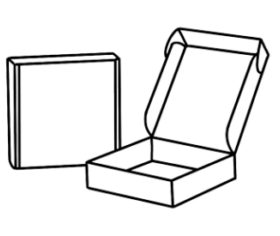 Bául
Bául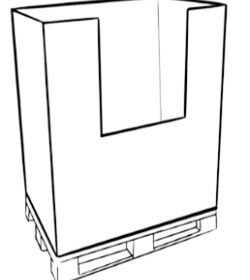 Box-pallet
Box-pallet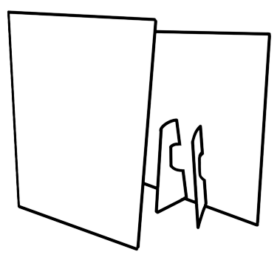 Displays
Displays Estuchería
Estuchería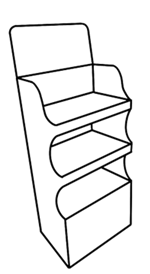 Expositor
Expositor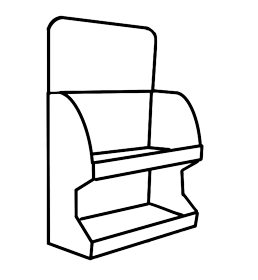 Exp.sobremesa
Exp.sobremesa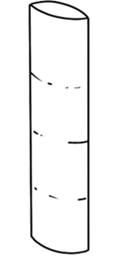 Tótem
Tótem Otros
Otros
